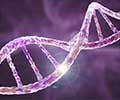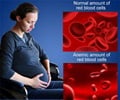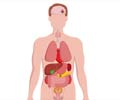Low platelet count and unusually large red blood cells characterize a rare genetic disease by hematologic symptoms known as Fanconi anemia

‘Ongoing efforts to identify additional genes and pathways linked to this disease may also reveal potential susceptibility genes for hereditary cancers.’





This week in the JCI, a team led by Detlev Schindler at the University of Wurzburg describes classical Fanconi anemia-like symptoms in a 12 year-old individual without mutations in any known Fanconi anemia genes. Sequencing of this individual's genome detected missense mutations in both alleles of the gene RFWD3, which encodes an enzyme that helps target other proteins for degradation. This patient's cells were more sensitive to chromosome breakage and showed other indicators of increased susceptibility to DNA damage compared to cells from healthy individuals. Cells lacking RFWD3 or harboring the patient's mutation showed similar DNA repair defects, which were rescued by expression of wild-type RFWD3. Moreover, RFWD3-deficient mice exhibited a phenotype that resembled other mouse models of Fanconi anemia. Together, these findings support the identification of RFWD3 as a Fanconi anemia gene.Schindler and collaborators further describe the mechanisms by which RFWD3 mediates DNA repair in two recently-published studies in Molecular Cell and future explorations of this enzyme may reveal its importance as a biomarker or therapeutic target in Fanconi anemia, cancer, or other human disease.
Source-Eurekalert















